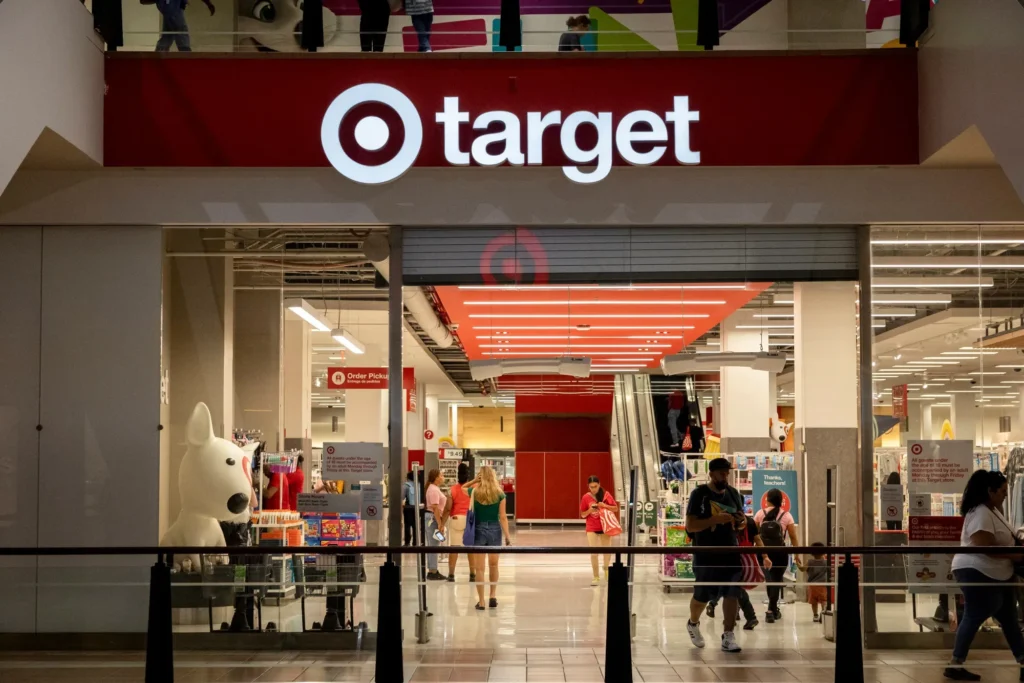Target’s CEO Brian Cornell steps down after 11 years, but insiders fear deeper trouble. Sales are falling, DEI backlash grows, and rivals are winning.
Table of Contents
Target’s CEO Exit Exposes a Retail Giant in Crisis — Is This the Beginning of the End?
Target (TGT) was once America’s darling of affordable fashion and trendy essentials. But today, it’s a company bleeding sales, losing customer trust, and falling behind competitors. On Wednesday, CEO Brian Cornell announced he’s stepping down after 11 years — a move long anticipated by Wall Street.
Yet, don’t be fooled. This leadership shakeup isn’t just about succession planning. It’s a desperate attempt to revive a sinking ship.
1. A Leadership Change That Signals Trouble — Not Hope
Target’s board picked Michael Fiddelke, its current COO and a 20-year veteran, to replace Cornell on February 1, 2026. On paper, that sounds stable. But here’s the problem:
“This internal appointment does not necessarily remedy the problems of entrenched groupthink and the inward-looking mindset that have plagued Target for years.”
— Neil Saunders, GlobalData Retail
This wasn’t a bold, future-focused decision. Target chose continuity over innovation, comfort over disruption. That’s risky when the retail battlefield is evolving faster than ever.
2. The Numbers Don’t Lie — Target Is Losing the Retail War
Let’s look at the brutal reality behind Target’s downfall:
| Metric | 2023 | 2024 | 2025 YTD |
|---|---|---|---|
| Quarterly Sales Growth | -2.3% | -3.9% | -4.5% |
| Stock Performance (TGT) | -12% | -21% | -32% |
| Net Margin | 4.8% | 3.5% | 2.7% |
| Market Share (US Retail) | 9.2% | 8.5% | 7.1% |
Three straight quarters of declining sales. One of the worst-performing stocks in the S&P 500. Investors are bleeding confidence, and competitors are eating Target’s lunch.
3. DEI Backlash — A Self-Inflicted Wound
Target’s retreat from diversity, equity, and inclusion (DEI) programs angered its progressive customer base while failing to win over conservatives. That’s a lose-lose strategy.
The fallout?
- Online protests exploded on Twitter, TikTok, and Instagram
- Even Anne and Lucy Dayton, daughters of Target’s co-founders, called the move a “betrayal”
- Shoppers left for competitors like Walmart and Costco
Instead of taking a clear stance, Target tried to play both sides — and ended up alienating everyone.
4. Competitors Are Winning — And Target Is Playing Catch-Up
Target’s struggles are amplified by how ruthlessly efficient its competitors are:
| Retailer | Grocery Revenue Share | Discretionary Goods | Online Growth (2025) |
|---|---|---|---|
| Walmart | 52% | 48% | +15% |
| Amazon | 20% | 80% | +22% |
| Costco | 45% | 55% | +11% |
| Target | 28% | 72% | +4% |
Target relies too heavily on discretionary products — home goods, clothing, electronics — just as inflation forces consumers to prioritize essentials. Meanwhile, Walmart’s grocery dominance shields it from volatility, and Amazon keeps owning e-commerce.
5. Tariffs, Inventory Blunders & Losing the Pricing Game
Target imports about 50% of its merchandise compared to 33% at Walmart. That means every tariff hike hits Target twice as hard. To protect profits, they raise prices — but price-sensitive shoppers simply walk away.
Add to that:
- Over-purchasing inventory post-pandemic
- Slashing prices to clear excess stock
- Missing consumer trends on fashion, home goods, and electronics
Result? Shrinking margins, higher debt, and fewer loyal customers.
6. Investor Confidence Is Cracking
Target’s stock plunged 10% in premarket trading after the resignation news. Analysts are divided on Target’s survival strategy:
- Bearish view: “Target’s long-term outlook is deteriorating.” — Robert Ohmes, Bank of America
- Bullish hope: New CEO Michael Fiddelke promises “Fun 101”, a trend-focused push for electronics and home goods.
But critics argue it’s too little, too late.
7. The Bigger Picture — Target Has Lost Its Identity
This isn’t just a leadership change. It’s a warning sign for Target’s entire business model. Once positioned as a trend-savvy alternative to Walmart, Target has failed to evolve with shifting consumer habits.
In chasing both sides of the political aisle, cutting DEI programs, struggling against tariffs, and fumbling inventory strategy — Target stands at a crossroads:
- Reinvent itself entirely — or
- Continue its slow decline into retail irrelevance

Conclusion — Target Needs a Revolution, Not a Replacement
Brian Cornell’s exit is not the solution. Michael Fiddelke inherits a storm of falling sales, angry shoppers, and frustrated investors. Unless Target redefines its identity, pricing strategy, and customer focus, this leadership change could mark the beginning of the end for one of America’s most iconic retailers.
FAQs
Q1. Why is Target’s CEO stepping down?
Brian Cornell is stepping down after 11 years amid falling sales, strategic missteps, and customer backlash.
Q2. Who is replacing Brian Cornell?
Michael Fiddelke, Target’s current COO and 20-year veteran, will become CEO on Feb 1, 2026.
Q3. Why is Target struggling compared to Walmart and Amazon?
Target relies heavily on discretionary spending and imports 50% of merchandise, making it vulnerable to tariffs and inflation.
Q4. Is Target’s stock a buy or sell?
Analysts are divided, but the company’s declining margins and competitive pressures make it a risky bet in 2025.
